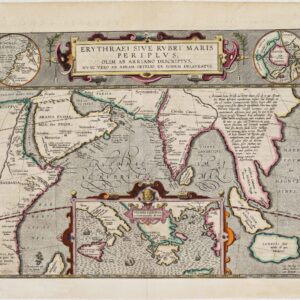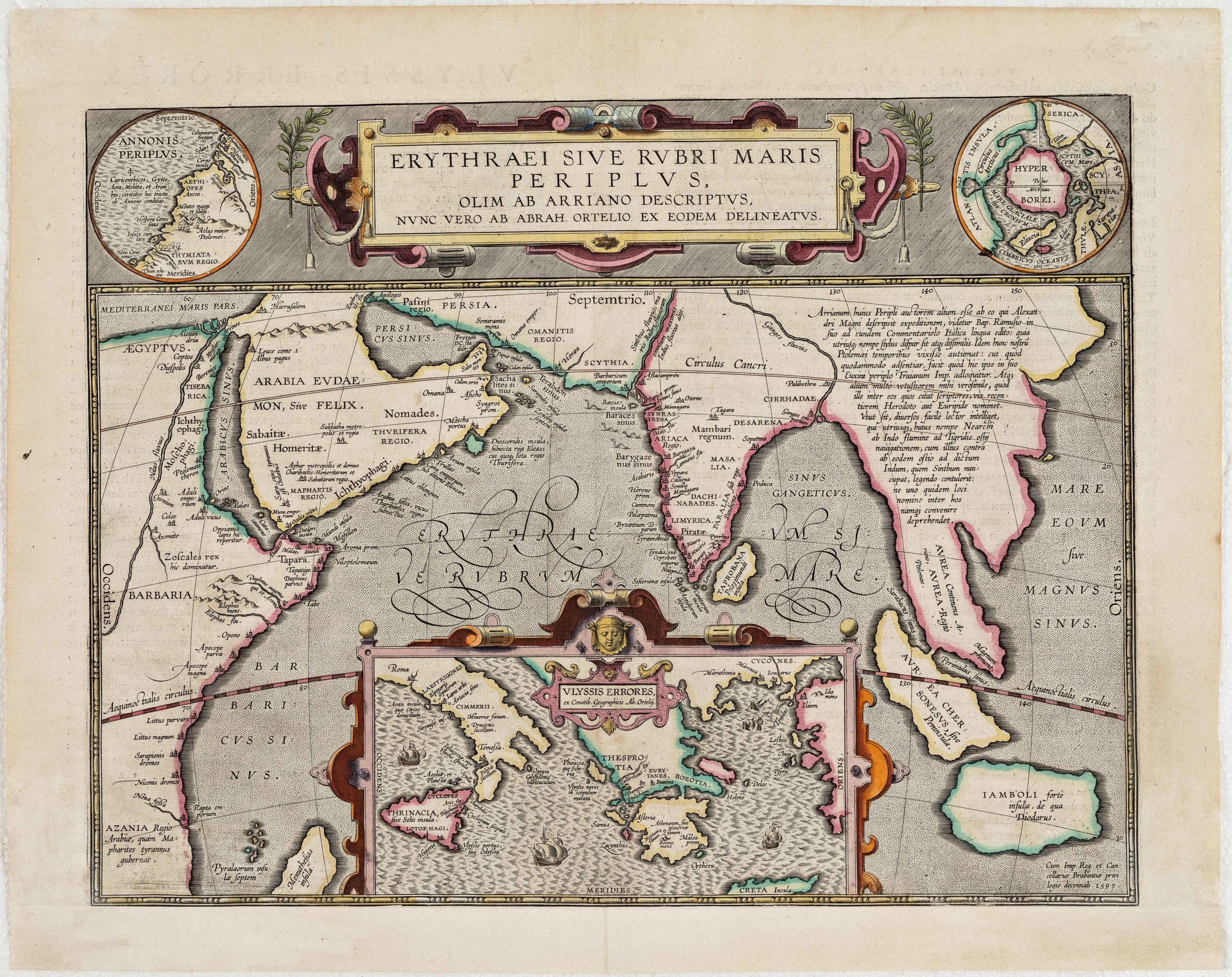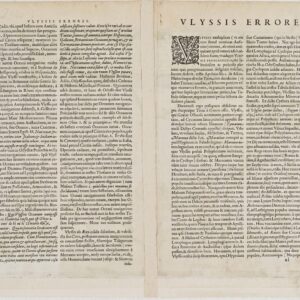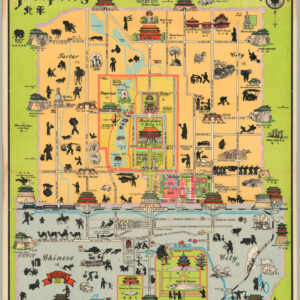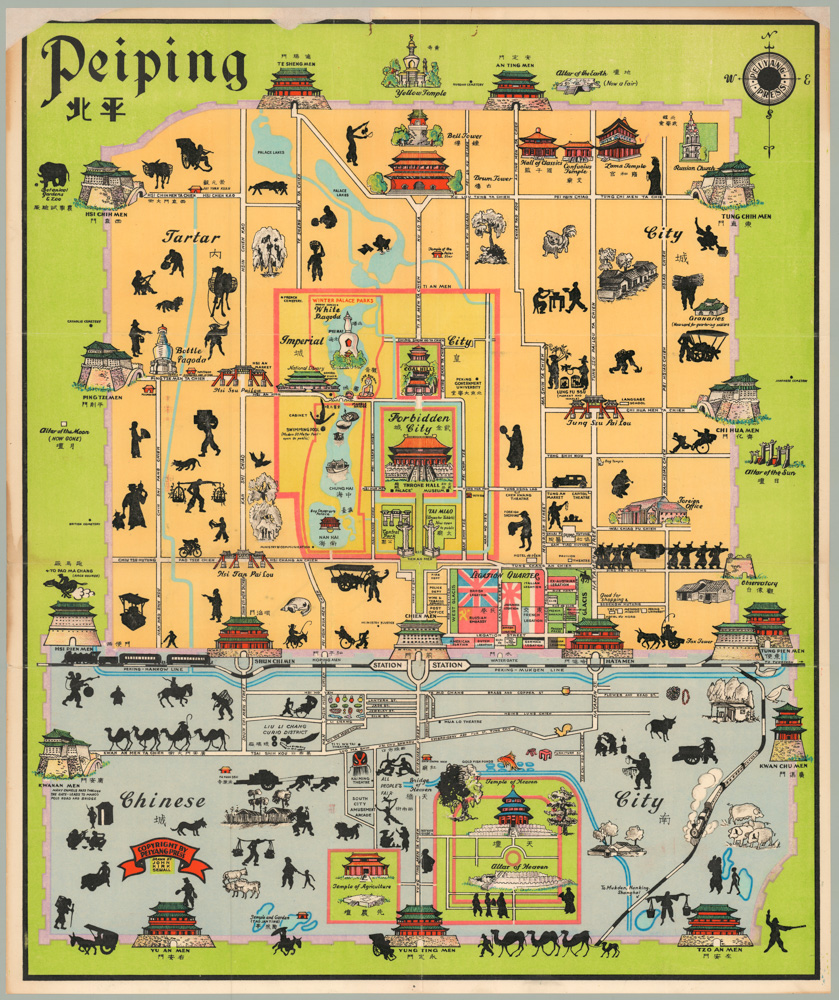The scarce and historically important secret targeting map for the U.S. invasion of Iwo Jima.
Special Air and Gunnery Target Map. Iwo Jima.
$4,000
1 in stock
Description
In 1944, not long after the United States formally entered World War II, this detailed map of the Japanese island of Iwo Jima was compiled as a secret document for the U.S. Navy. It was one of two Navy maps of the island that were created in preparation for a US invasion.
The Battle of Iwo Jima was one of the hardest-fought battles of World War II and an iconic event in American military history. Of the two maps produced at the time, this is the smaller and rarer one, which was designed specifically as a targeting map for gunnery units. While the reduced size of the map suited mobile assault units, it was also different in that it included much more of the waters west of Iwo Jima. In this way, advancing Marines could hold key positions and begin targeting any reinforcements or gunboats advancing from the Japanese mainland.
The map is essentially topographical, showing Iwo Jima’s natural contours and landscape, as well as a plethora of man-made features. The latter includes two airstrips in the middle of the island (Motoyama 1 & 2, with a third strip being constructed at Motoyama 3), barracks, bunkers, and an oil refinery to ensure fuel supplies. Throughout the island, we see a variety of defense symbols, densely plotted and identified by a key in the lower right corner of the map. Most of these symbols denote Japanese positions, including anti-tank and machine guns, radar and radio stations, bunkers, and pill-boxes.
Other dangers to an invasion force, such as trenches, barriers, flood lights, and barbed wire, have also been carefully noted on the map. Despite the abundance of information conveyed, knowledge of Iwo Jima was, in fact, very limited, and this map was based entirely on aerial photographs without the use of ground control or reconnaissance. Consequently, users are warned on the map that both azimuth and scale may be unreliable.
The map has been overlaid with a purple-colored grid designed to provide “pin-point designations” for airstrikes and naval bombardments. It also serves to direct artillery fire during the onslaught. Interestingly, a secondary and tighter grid in orange (salmon) is overlaid with the primary grid as an ‘arbitrary target square system.’ This allowed troops on the ground to use the blue letters and numbers to target more specific positions for bombardment and aerial strikes.
Along the southeast and northwest of the island are flat beaches that were suitable for landing an invasion force, but these also constituted some of the best-defended approaches on the island (seen in the concentration of symbols here). The coastlines have been subdivided into sections, and each section has been given its own distinct designation, consisting of a color and number. History allows us to pinpoint Yellow1 and Yellow2 as the two key landing points in the southern invasion of the island.
Census
This map was compiled under the Assistant Chief of Staff of G2 (i.e. the Intelligence Section of the U.S. Army and Marine Corps – indicated at the bottom of the legend). It was created from aerial photographs, with contours defined by the 1633rd Engineer Photomapping Platoon, and then printed for CINCPAC (Commander in Chief Pacific Fleet Headquarters) and CINCPOA (Commander in Chief, Pacific Ocean Area) by the 64th Engineer Topographic Battalion in November 1944.
Institutional holdings are limited. The OCLC lists two examples at the libraries of Brown University and the Wisconsin Veterans Museum Research Center (no. 690692942), and we must presume that a number of government archives supplement these holdings. Being a map that was used in the field by American soldiers, examples do appear on the market, consistently commanding high prices.
Context is Everything
After the Japanese attack on Pearl Harbor, America entered the war on the Allied side, dramatically ramping up the offensive in both Europe and Asia. Within the Pacific theatre of war, a number of crucial battles were fought for regional supremacy, but few have achieved the iconic status that the Battle of Iwo Jima did. Iwo Jima is a small volcanic island, some 650 nautical miles southeast of Tokyo. It was a critical node for the Japanese Air force, which had set up forward airbases there and built two landing strips for their fighter planes. Securing it from the Japanese was deemed of utmost importance, and on February 19, 1945, United States Marines stormed the beaches.
Ferocious battles raged over the next 36 days, with thousands of men falling on both sides. Nearly 7,000 U.S. Marines were killed, and another 20,000 were wounded. The Marines, on the other hand, captured only 216 Japanese soldiers, implying that the remaining 20,000 soldiers defending the island were all killed. Iwo Jima was finally secured on March 26. As part of the victory, six Marines raised the American flag on the island’s southern summit, Mount Suribachi. The American war photographer, Joseph Rosenthal, was present at the moment and captured this event in an iconic photograph that later served as the template for the famous Marine Corps War Memorial. To this day, Iwo Jima is remembered for its brutality and the cost of life.
Cartographer(s):
Condition Description
Good. Wear and soiling along the original fold lines. Verso repair to fold separations.
References

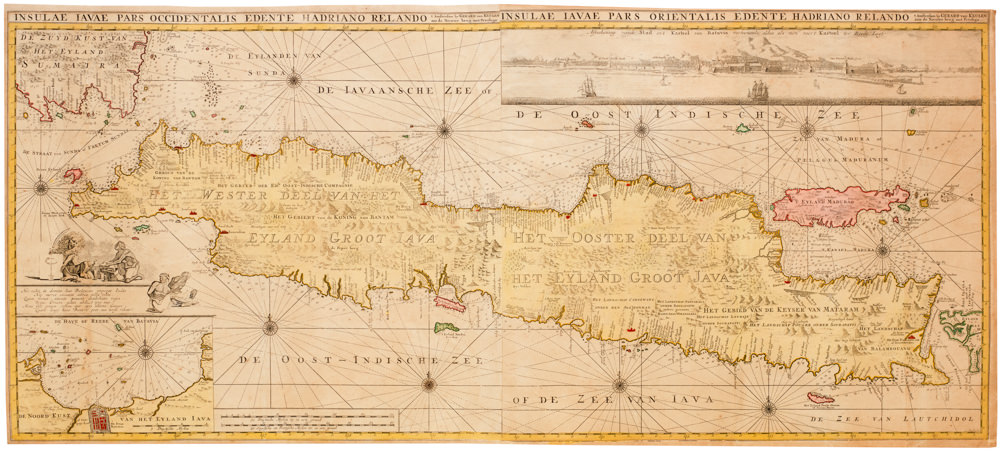
![[Political broadside] Solidarity with the People and Students of the DPR of Korea.](https://neatlinemaps.com/wp-content/uploads/2022/10/NL-01603_thumbnail-1-300x300.jpg)
![[Political broadside] Solidarity with the People and Students of the DPR of Korea.](https://neatlinemaps.com/wp-content/uploads/2022/10/NL-01603_thumbnail-scaled.jpg)
![[Political broadside] Solidarity with the People and Students of the DPR of Korea.](https://neatlinemaps.com/wp-content/uploads/2022/10/NL-01603_thumbnail-scaled-300x300.jpg)
